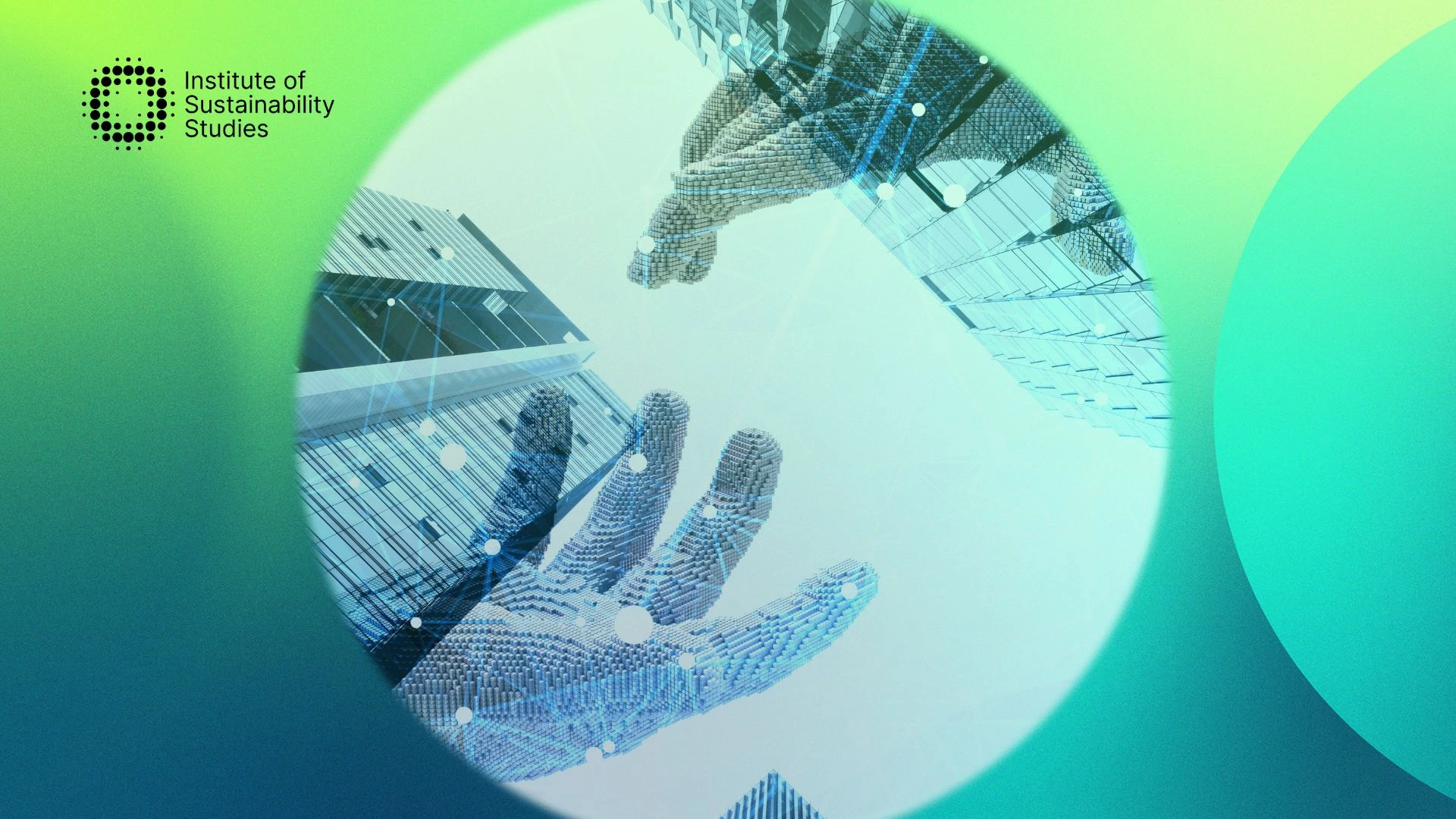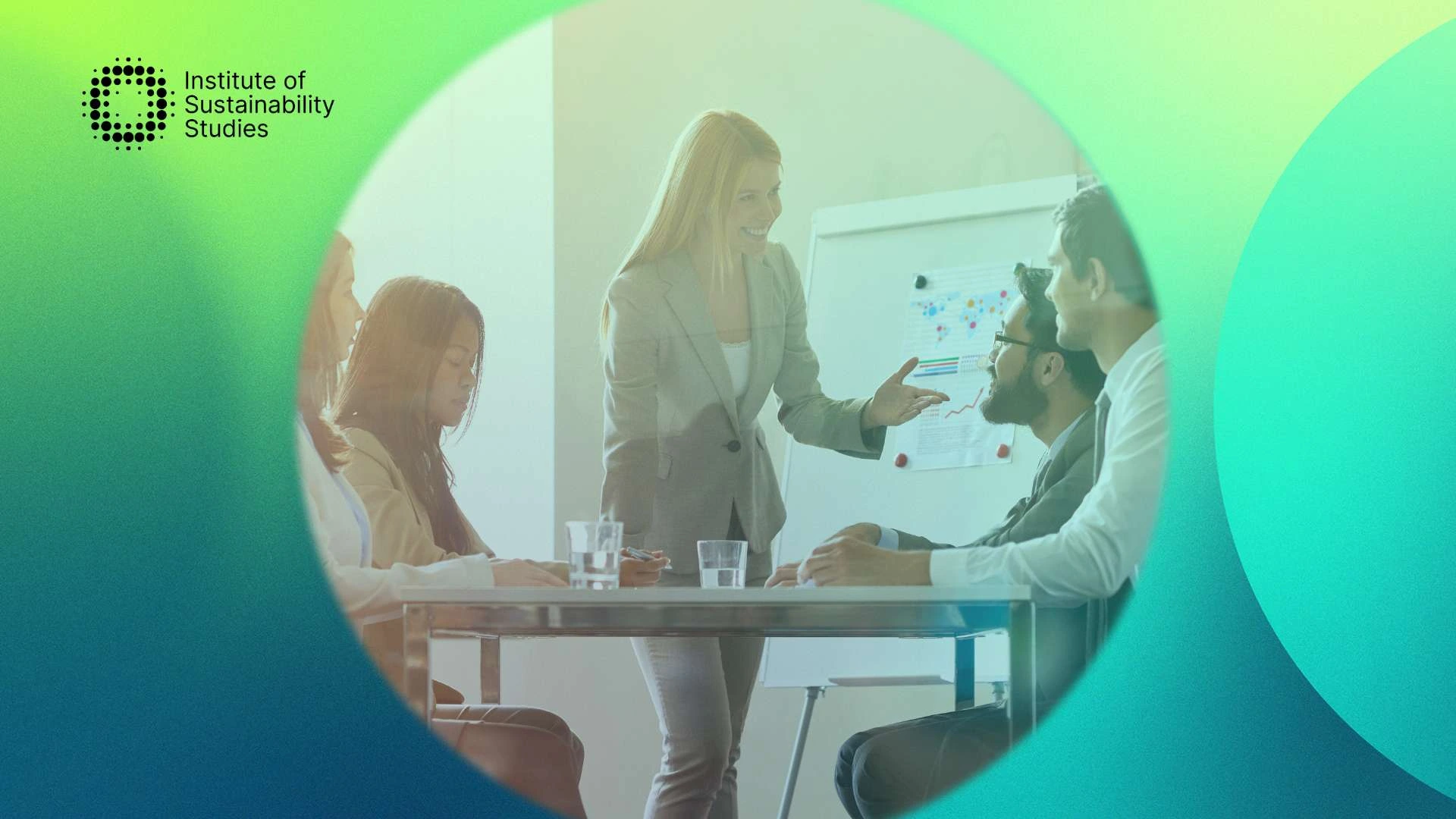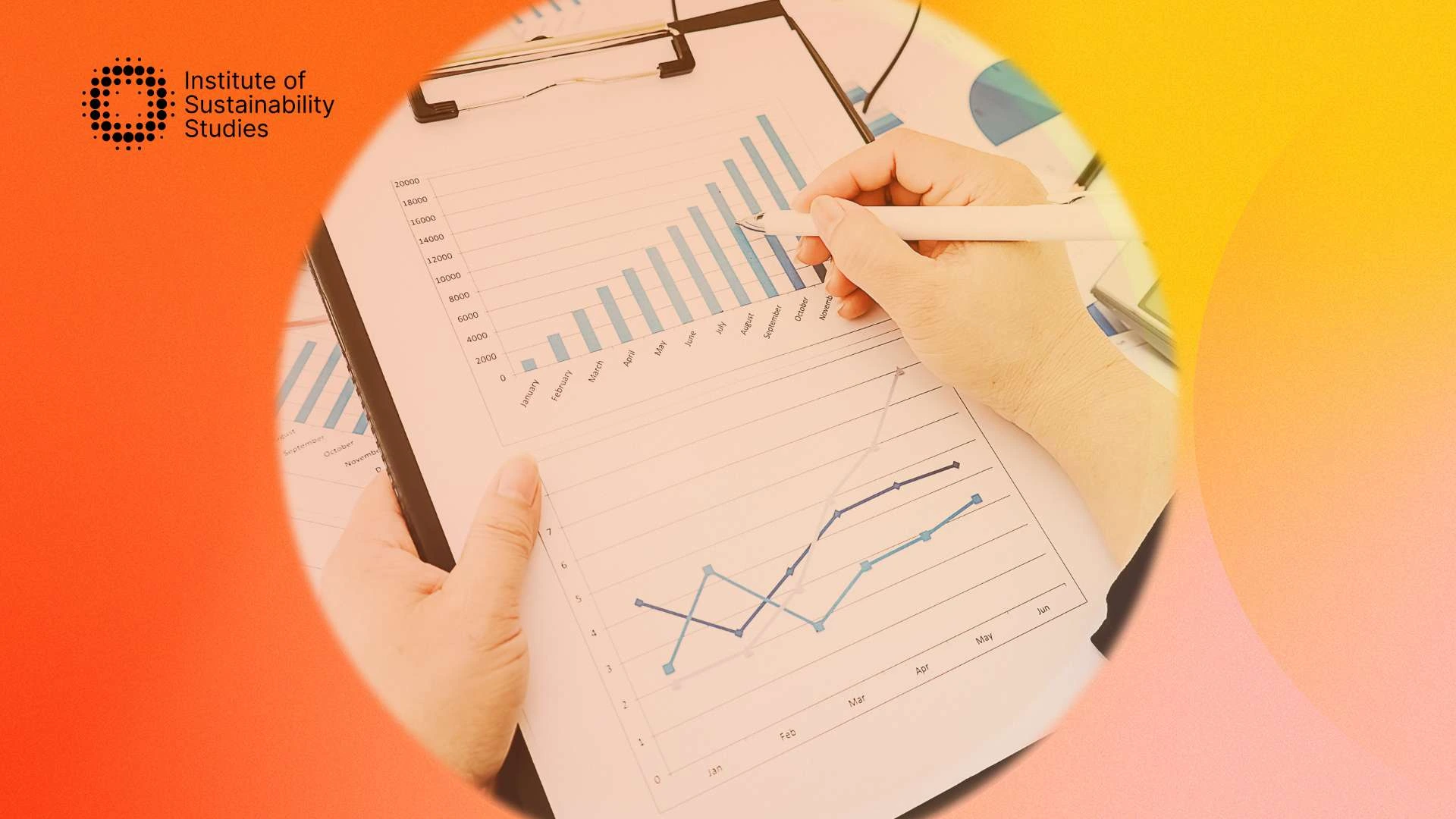Environmental degradation costs the global economy more than 5 percent of GDP each year, according to the World Bank. At the same time, the growth of clean technologies, green finance, and circular design is creating new opportunities across every sector. Businesses are under growing pressure to respond. Investors, regulators, and consumers expect more than environmental pledges. They are looking for credible, long-term business sustainability strategies that support a greener and more inclusive economy. Keep reading to explore what a green economy looks like – and how businesses can play a leading role in shaping it.
Green economy meaning – What is the green economy?
A green economy is an economic system designed to promote sustainability, equity, and resilience while protecting the natural environment. It focuses on reducing carbon emissions, enhancing resource efficiency, and fostering inclusive growth.
Rather than measuring success purely through GDP, a green economy aligns economic activity with social and environmental well-being. It is increasingly seen as a vital pathway for addressing the dual challenges of climate change and inequality, offering a blueprint for sustainable development that operates within planetary boundaries.
Build the skills your organisation needs to thrive in the green economy with targeted sustainability training
Key characteristics of a green economy
The green economy is defined by several interrelated principles that distinguish it from conventional economic models:
1. Low-carbon
Emissions are minimised through clean energy adoption, sustainable mobility, and climate-smart infrastructure. The goal is to decouple economic growth from greenhouse gas emissions.
2. Resource-efficient
Production and consumption processes are optimised to reduce waste and conserve resources. This includes circular economy practices like recycling, remanufacturing, and product life extension.
3. Socially inclusive
Economic benefits are distributed fairly, ensuring that green transitions support job creation, social equity, and opportunities for marginalised groups.
4. Nature-positive
Economic development goes hand-in-hand with ecosystem protection, biodiversity conservation, and the restoration of natural capital.
How businesses can contribute to a green economy
Businesses play a crucial role in enabling the transition to a green economy by integrating sustainability into their operations, supply chains, and long-term strategy. Their contributions can accelerate low-carbon innovation, reduce environmental impact, and promote social inclusion across industries.
1. Integrate circular economy principles
Shifting from a linear take-make-dispose model to a circular one helps reduce resource extraction, waste, and emissions.
Action: Design for durability, repairability, and recyclability; invest in reverse logistics; adopt product-as-a-service models. For example, Philips has transitioned to circular lighting systems, where customers pay for light, not ownership of equipment.
2. Decarbonise operations and value chains
Reducing carbon emissions is central to a green economy. Businesses can lead by adopting science-based targets and net-zero strategies.
Action: Improve energy efficiency, switch to renewable energy, and collaborate with suppliers to reduce Scope 3 emissions. To assist with this, the Science-Based Targets initiative (SBTi) helps businesses align with the Paris Agreement goals.
3. Invest in green innovation
Developing sustainable products, materials, and business models positions companies as leaders in the green transition.
Action: Fund R&D in clean technologies, eco-design, and regenerative agriculture; scale up green manufacturing. The International Energy Agency estimates that nearly half of emissions reductions needed by 2050 will come from technologies not yet on the market.
4. Adopt sustainable procurement practices
Supply chains account for a major share of environmental impact. Ethical and environmental criteria in sourcing decisions are essential.
Actions Prioritise local, low-impact suppliers; embed ESG standards in contracts; conduct life cycle assessments.
5. Support green jobs and a just transition
A green economy must be inclusive. Businesses have a role in ensuring that workers and communities benefit from sustainable transitions.
Action: Reskill employees, engage in fair labour practices, and support social enterprises or community-led projects. For instance, Ørsted, once a fossil fuel company, now trains employees in renewable energy as part of its just transition plan.
6. Align with ESG frameworks and green finance
Demonstrating a commitment to sustainability enhances investor confidence and access to capital.
Actions Report against recognised frameworks like the Global Reporting Initiative (GRI), the Taskforce on Climate-Related Financial Disclosures (TCFD), or the EU Taxonomy; issue green bonds or sustainability-linked loans.
7. Engage in policy advocacy and collaboration
Systemic change requires cross-sector collaboration. Businesses can influence policy and market standards.
Actions: Join green business coalitions; advocate for climate-friendly policies; co-develop industry standards with NGOs or governments.
8. Measure impact and report transparently
Transparent, credible reporting builds trust and drives improvement.
Actions: Use integrated reporting to link sustainability to business performance; disclose progress toward SDGs and sustainability KPIs.
Challenges and opportunities ahead
Transitioning to a green economy presents a dual reality for businesses: significant structural challenges paired with equally powerful opportunities for innovation, leadership, and long-term resilience. Below, we explore six key areas where tension and transformation coexist.
Systemic change requires investment, but it unlocks innovation
Transitioning to low-carbon and circular business models often requires major shifts in strategy, infrastructure, and mindset. These systemic changes can be costly, time-consuming, and disruptive to existing operations.
Yet they also open the door to innovation. Businesses that redesign products for longevity, adopt circular manufacturing processes, or embed regenerative agriculture practices are not only reducing their environmental footprint; they’re creating new business models, entering emerging markets, and meeting the growing demand for sustainable goods and services.
Regulatory uncertainty slows action, but enables leadership
The green economy is still taking shape, and with it comes a lack of regulatory clarity, especially around carbon pricing, extended producer responsibility, and green taxonomies.
This uncertainty can deter investment or cause businesses to delay strategic action. At the same time, it creates space for leadership. Companies that act ahead of policy (by aligning with international frameworks such as the EU Green Deal or the UN Sustainable Development Goals (UN SDGs) can help shape future standards, build credibility, and influence sector norms.
Resource efficiency takes time, but yields long-term gains
Shifting to more resource-efficient processes can involve significant short-term cost and complexity. For example, reducing waste, rethinking materials, and optimising energy use. These efforts often result in substantial long-term savings, operational resilience, and reduced exposure to volatile resource markets.
By adopting circular economy principles, businesses can reduce dependency on raw materials, lower production costs, and position themselves for success in a resource-constrained future.
Green financing isn’t equally accessible, but it’s rapidly expanding
While sustainable finance is growing, access remains uneven, particularly for SMEs or businesses in regions with limited financial infrastructure. Capital-intensive green projects may struggle to secure initial funding.
However, the opportunity is expanding: green bonds, sustainability-linked loans, and ESG investment funds are becoming mainstream. Companies that build credible, verifiable sustainability strategies are better placed to tap into these financing channels and attract impact-driven investors.
Workforce transition is a pressure point, but also a social dividend
The shift to a green economy will reshape labour markets, requiring new skills in areas such as clean energy, sustainable construction, and circular logistics. Businesses may face skill shortages or transition risks for carbon-intensive roles.
But by investing in green jobs and training, companies can future-proof their workforce, strengthen community ties, and contribute to a just transition that supports economic inclusion and social equity.
Supply chain redesign can be disruptive, but it builds resilience
Rethinking supply chains to align with green economy principles, such as low-carbon sourcing, ethical procurement, and traceable materials, can be logistically challenging and may increase short-term costs.
However, doing so enhances long-term resilience. Localised and sustainable supply chains are less vulnerable to global shocks, regulatory risks, and reputational damage. They also reflect growing consumer and investor expectations for transparency and responsibility.
Conclusion
Building a green economy takes more than ambition. It requires practical action, sustained investment, and the courage to rethink how business is done. While the transition brings complexity, it also creates space for reinvention – economically, socially, and environmentally. For businesses prepared to lead, the opportunities are substantial.
Approaches that focus on low-carbon growth, circular resource use, and inclusive development will be better positioned to withstand external shocks, unlock new markets, and engage talent that values purpose as much as performance. This is more than a shift in policy or consumer preference.
The green economy represents a fundamental redefinition of value – one that balances profit with long-term impact. The companies that embrace this future will not just respond to change; they will help define what responsible business looks like in the decades ahead. Want to turn strategy into action? Our corporate sustainability training equips your team with the tools to lead and thrive in a green economy.
Equip your teams to seize green economy opportunities and meet emerging sustainability demands with organisation-wide training
Dedicated to harnessing the power of storytelling to raise awareness, demystify, and drive behavioural change, Bronagh works as the Communications & Content Manager at the Institute of Sustainability Studies. Alongside her work with ISS, Bronagh contributes articles to several news media publications on sustainability and mental health.
- Bronagh Loughlinhttps://instituteofsustainabilitystudies.com/insights/author/bronagh/
- Bronagh Loughlinhttps://instituteofsustainabilitystudies.com/insights/author/bronagh/
- Bronagh Loughlinhttps://instituteofsustainabilitystudies.com/insights/author/bronagh/
- Bronagh Loughlinhttps://instituteofsustainabilitystudies.com/insights/author/bronagh/










